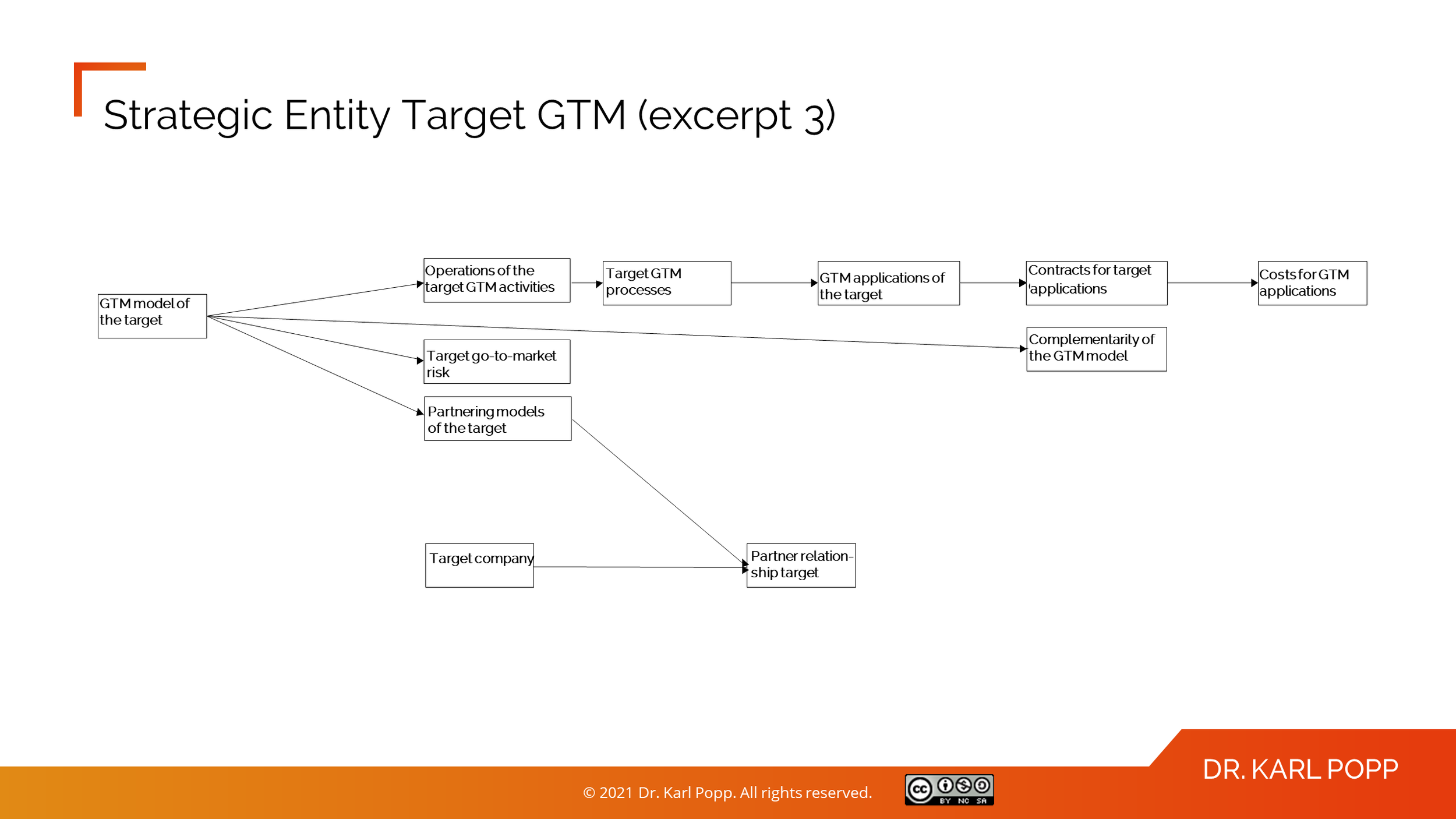Strategy 101: Building strategy with strategic entities
Strategic entities
There are several occasions where we need to look at and compare strategies. Starting with creating an M&A strategy early in the M&A process, several possible strategic scenarios (strategies) are compared and one or more of such strategies for the buyer company are chosen.
When modeling strategies, how do we make sure they are complete and consistent? I propose to make use of so-called strategic entities. They are views based on the data model for M&A processes.
Model-based strategy definition
We all have seen enough examples of failed strategies based on unstructured documents like powerpoint slides. We can do better. So, i started to create deteiled definitions of strategic entities that can be used for planning. Based on the M&A date model with about 800+ objects i created a dozen strategic entities and implemented a tool to define them. Here is an example.
Target Go-To-Market Model
We will analyze the Target Go-To-Market Model step by step. As we can see in the following picture, the target resides in several target countries, where there are subsidiaries (target companies). To analyze the Target Go-To-Market Model Products of the target are important, as well as the sales numbers of the target. The target also has different relationships with partners in the different countries. My tool creates the view on the M&A data model and repositions the data objects and exports windows metafiles that i can use to create pictures.
Figure 1: Strategic entity Target GotoMarket (1)
Now. let us have a look at the Product of the target and its relationships. Here, the products are sold directly and indirectly. so we need representations for prices and contracts for direct and indirect sales via partners. As you can see in the next picture, there are two types of customer relationships and contracts, the direct Target customer contract and the indirect Customer contract of the partner. Both relate to pricing conditions specific to the customer relationship.
Figure 2: Strategic entity Target GotoMarket (2)
What else is needed to build a strategy for Go-To-Market? Details of the GTM model and operations. So, we have to look at the processes and the applications for GTM activities and their cost. In an acquisition situation, we also should look at how well the target GTM fits the acquirer´s GTM model (called complementarity). Since every activity carries a risk, the Target GTM risk has to be analysed. For the indirect channel, for selling via and with partners, partnering models exist and should be analysed, too.
Figure 3: Strategic entity Target GotoMarket (3)
By leveraging the strategic entity Target GTM, the definition of a GTM strategy is enabled. Its details allow to build a holistic strategy, since not only strategy, but also operations are part of the picture.
Read more in my upcoming book on M&A strategy












